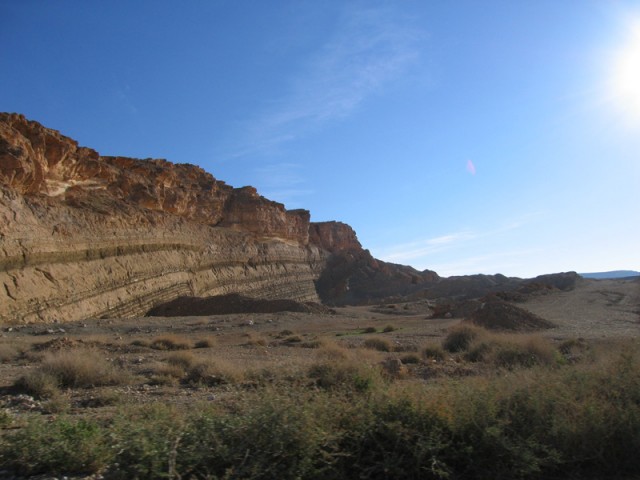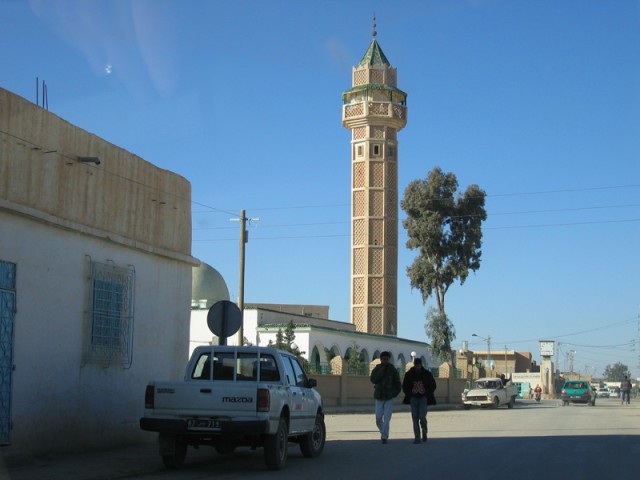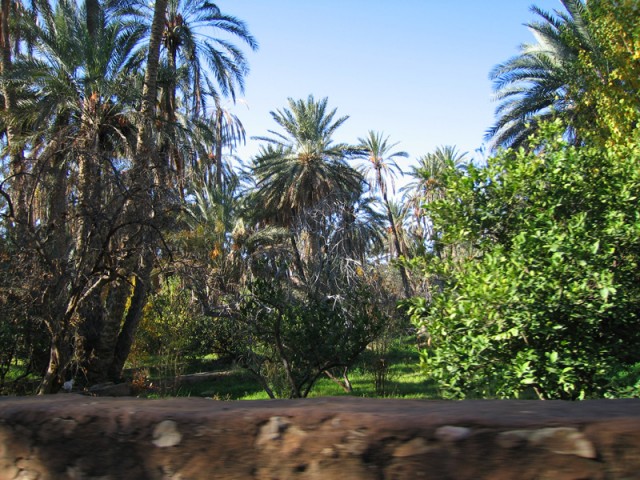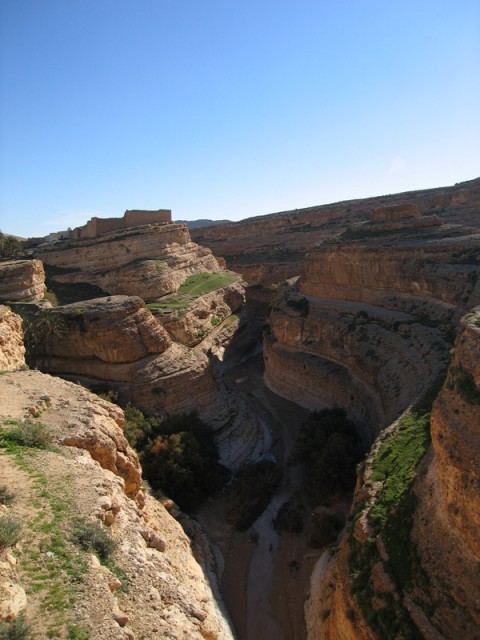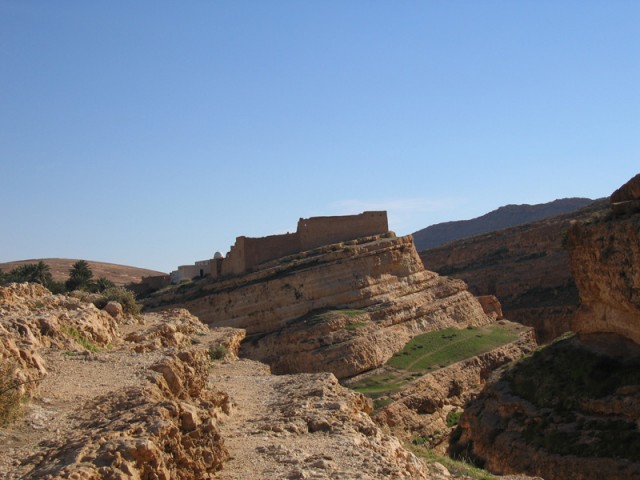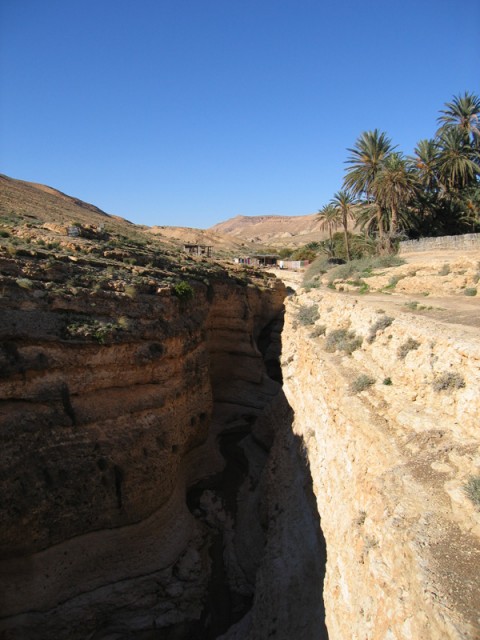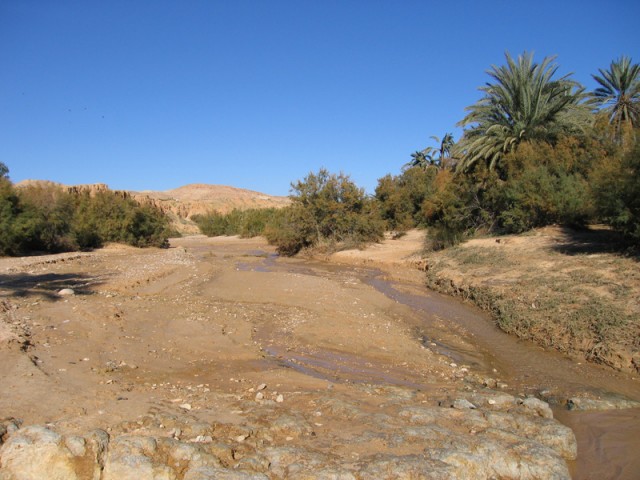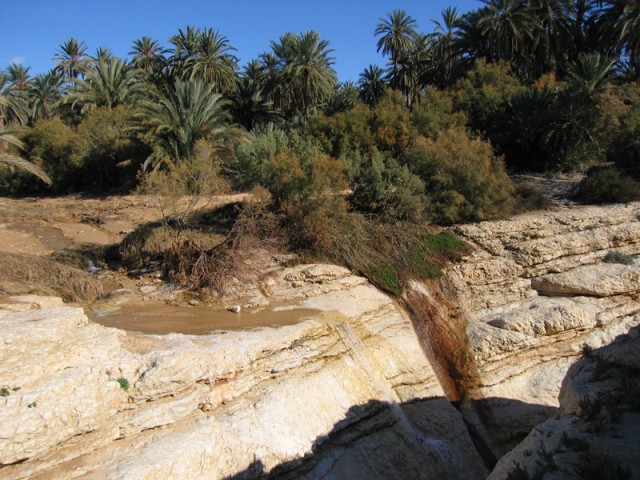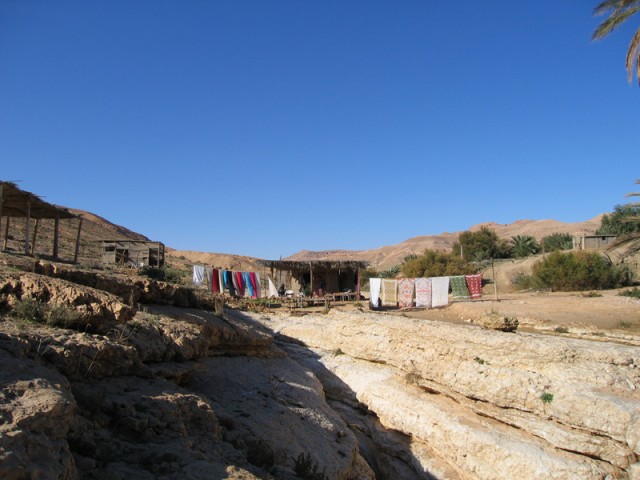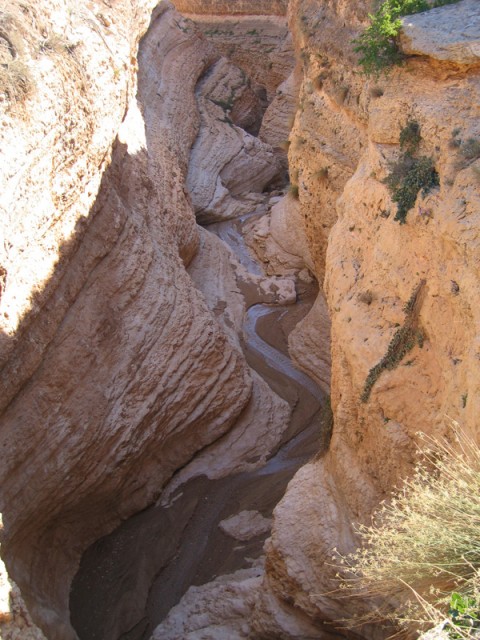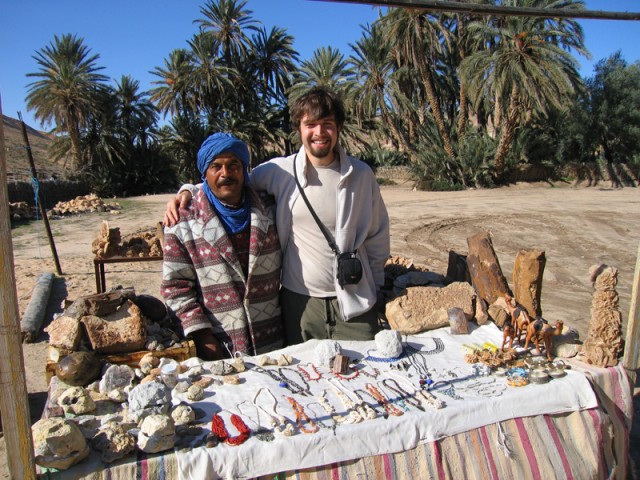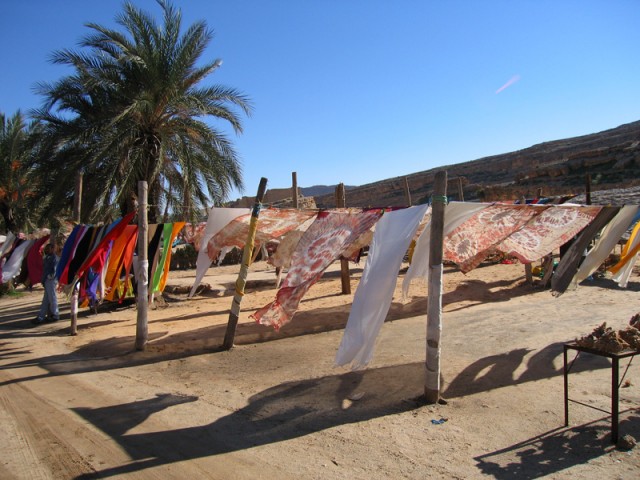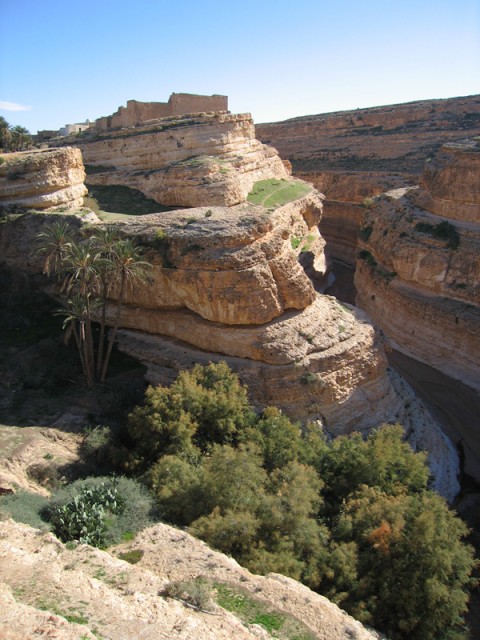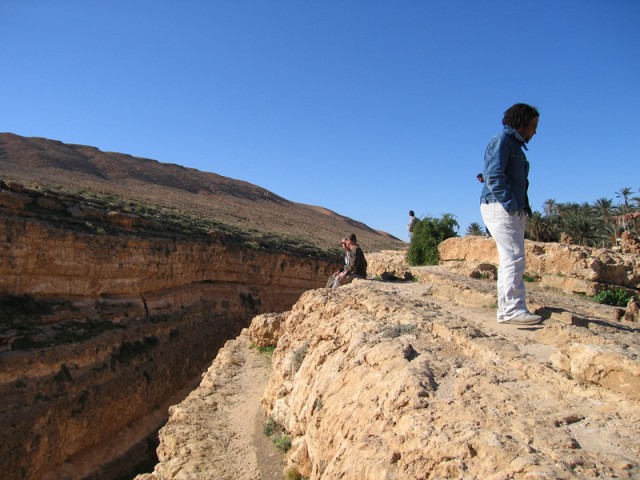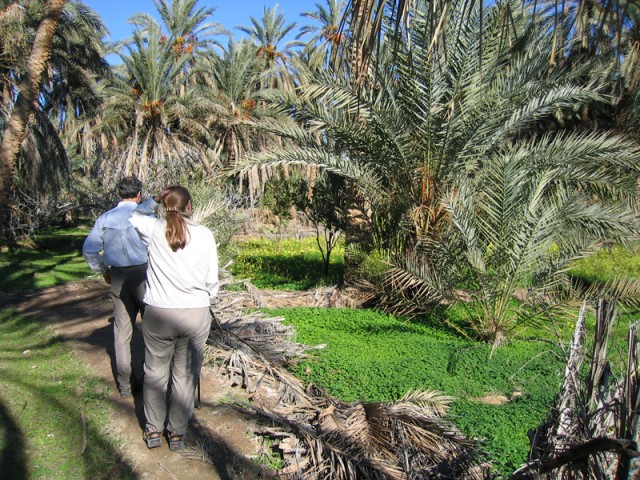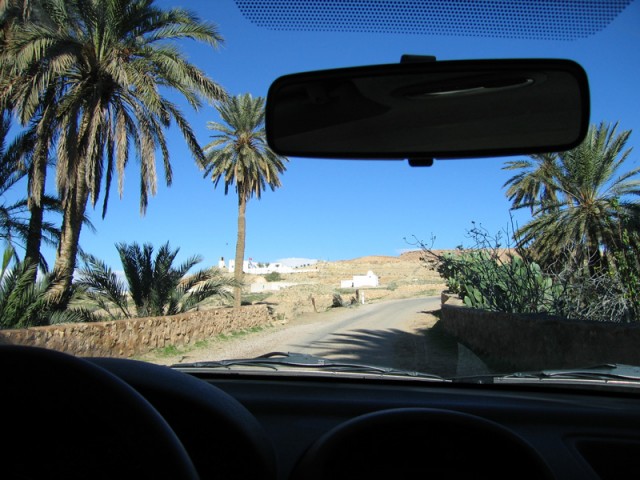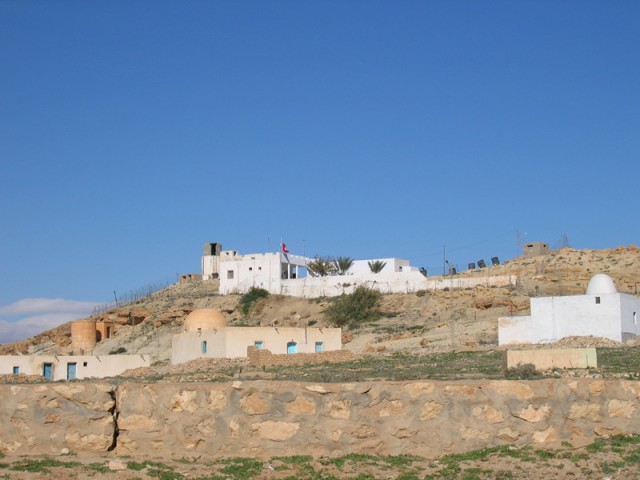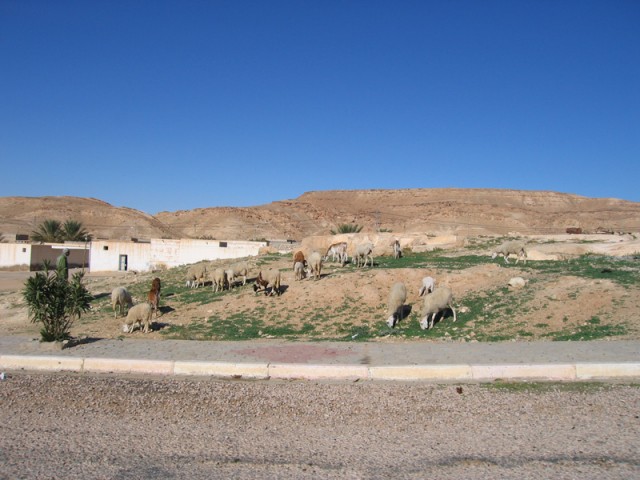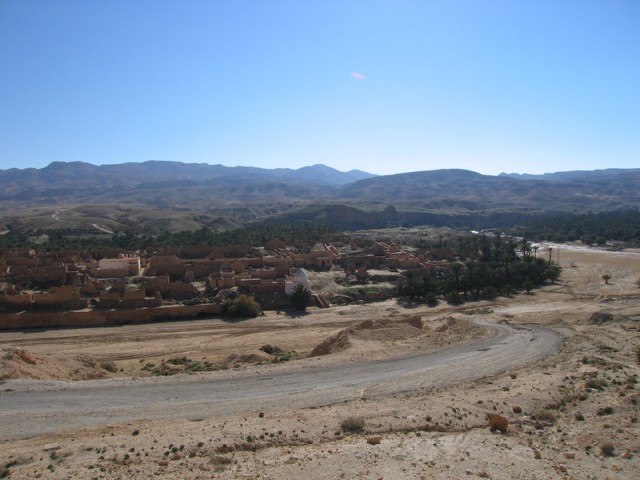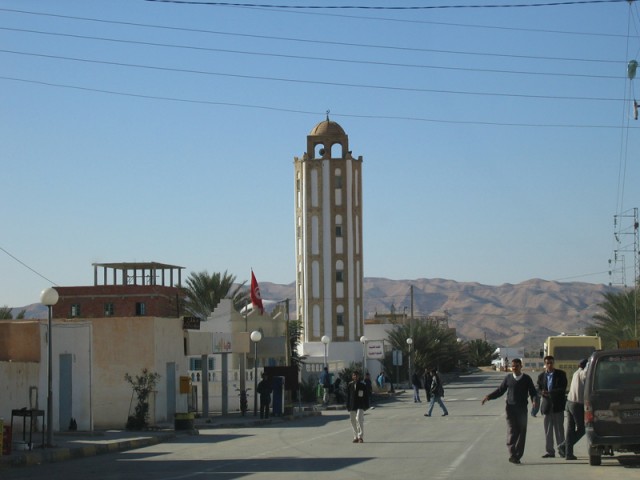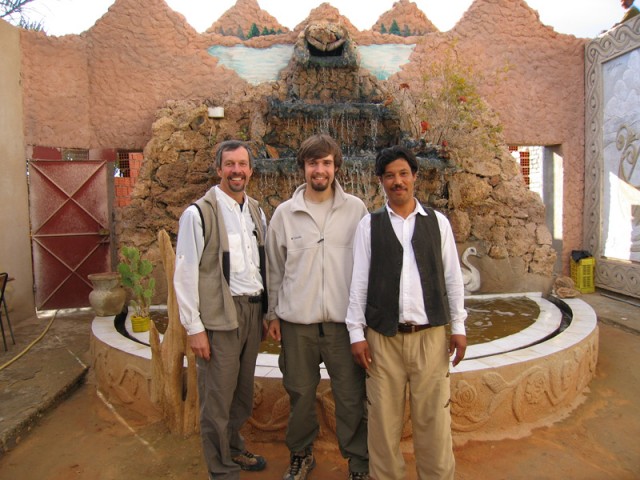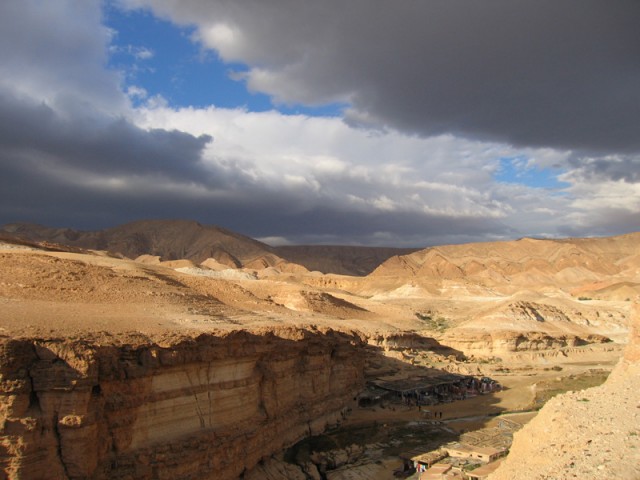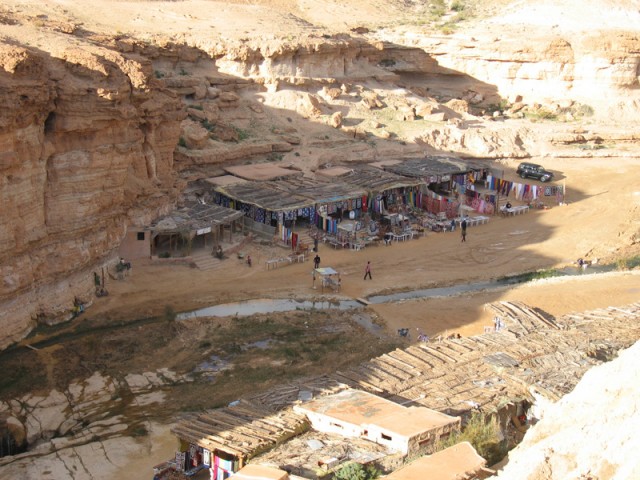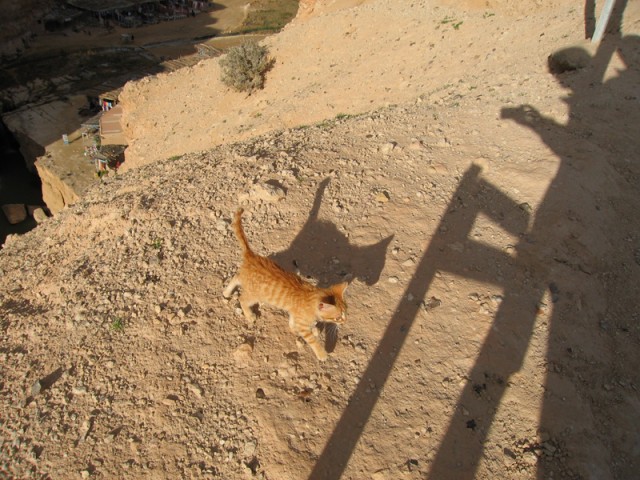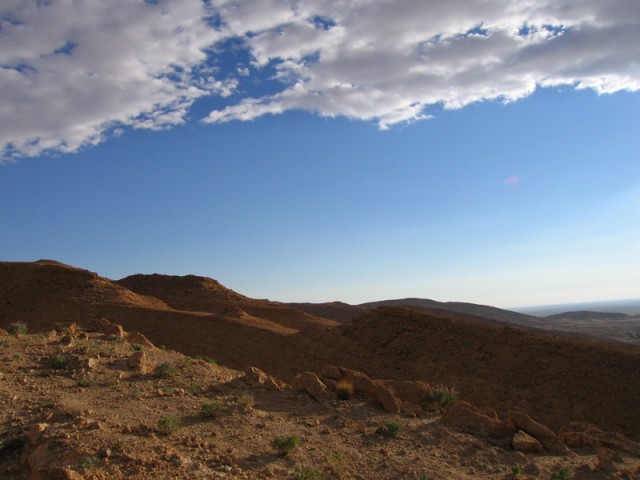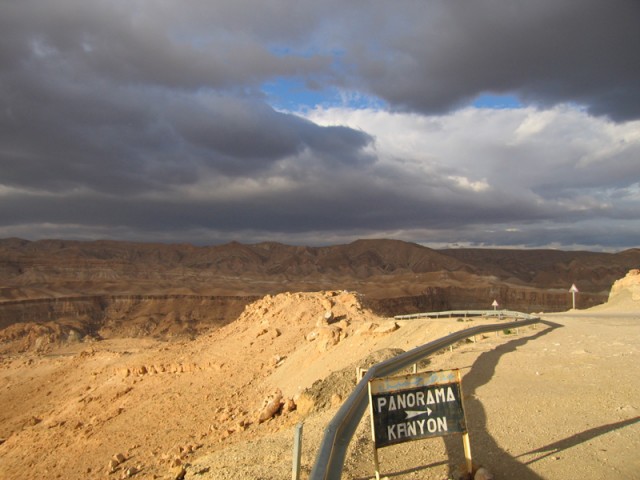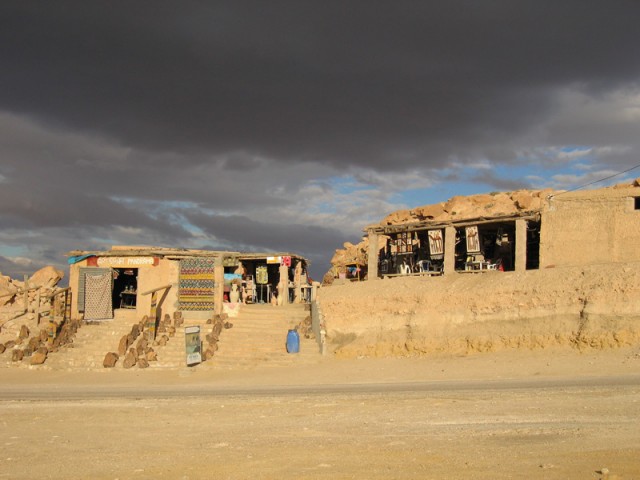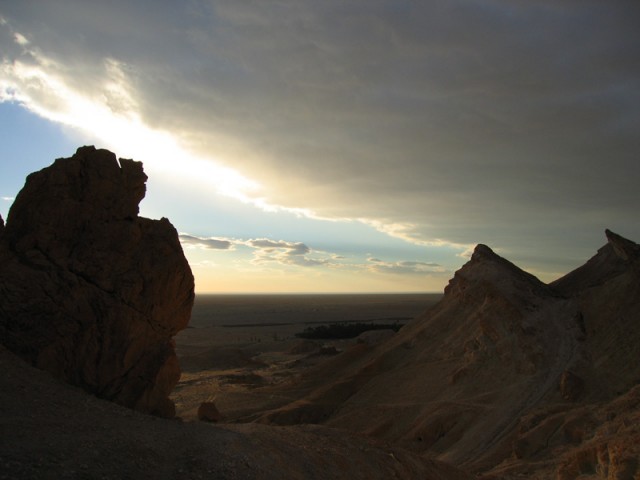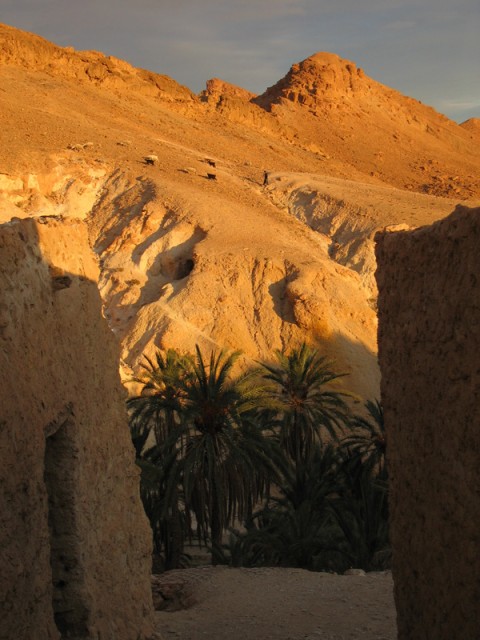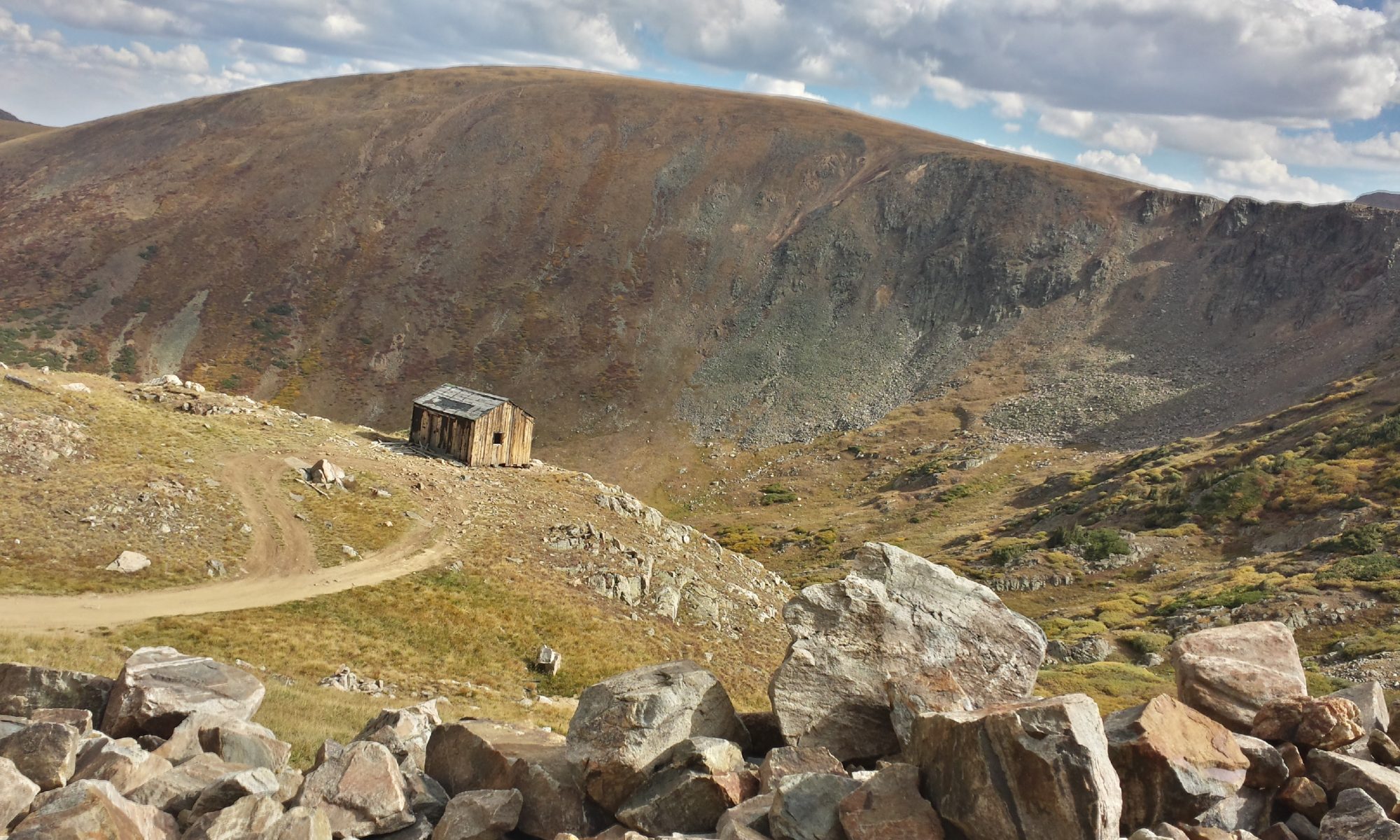Motoring through the southern half of Tunisia I got a chance to see firsthand the arid conditions of agriculture. Aside from the common oasis of greenery in a sea of brown and tan, Tunisia doesn’t have much in the way of water resources. Unlike in the arid climate regions of America where deep bore wells are used to draw water to the surface for industrialized agriculture, Tunisia employs a more environmentally friendly approach of dry land farming. Throughout the southern deserts, every single dip, ditch, creek, ravine, or low spot on any sort of a slope is blocked by stone and earthen check dams. Behind these dams, hundreds of years of patience have created level patches of soil. Within this soil, the crops of the south are grown.
Some crops are planted at a specific point during the year and allowed to lie dormant until proper moisture rains down in a brief and highly infrequent deluge from above. Other crops are planted and come up on their own accord in spite of the dryness. These check dams actually hold water back underneath the soil where hearty plants can tap into the moisture during dry months. The other category of plants is planted only after it has rained and the earth is humming with water. Palms and other trees grow in these small beds of plenty tapping into the deep underground water supply year round.
These patches of cultivation in an otherwise sea of brown are the soul result of human intervention in an otherwise eroding landscape. Across the south of Tunisia, the ground is hard and parched. When rain does come, it comes in such copious amounts that the earth isn’t able to absorb the moisture. Instead, it runs off in huge torrents, cutting deep ravines and channels across the landscape. To harness the water and erosional soil, dams of all sizes, from tiny to immense, have been built over the centuries. Only through the continued tending of humans have these dams remained in place. In several locations, where maintenance of the dams has fallen by the wayside due to people moving on to bigger cities or to more profitable things, I saw breached dams with deep water cut trenches burrowing through the once productive soil behind the dams.
Not only do these dams provide agricultural land, but they also control the torrential downpours which periodically strike the southlands of Tunisia. Without such places for the water to be slowed down, huge torrents would rush down the dry riverbeds, washing out roads, houses, communication lines, everything. Recognizing the value of the dams, the Tunisian government has a program to revitalize and expand the dam system to help control the flood waters and encourage agriculture on the marginal lands of the desert.
This isn’t the first time I’ve seen such dams in use. On the east side of the high atlas mountains in Morocco, I also saw such a system in place and still actively used by the Berber tribes who reside in the mountains. Conditions there were so extreme as to warrant planting individual dwarf wheat plants about ten inches apart to make the most of limited amounts of rainfall. When I visited one such agricultural operation outside the small village of Amassen, the wheat plants were already ready to harvest in the beginning of July and only stood about five inches tall. I haven’t seen such extreme agriculture in Tunisia, but no doubt, in some areas, it once existed. Since independence, such subsistence agriculture has, it appears, fallen by the wayside in favor of more profitable and leisure inducing enterprises.
As more and more high production agricultural land in Tunisia is taken up by tourism and industry, Tunisian farmers will be forced onto more and more marginal land until even the driest of locations are being farmed. Maybe moisture farming, like Luke Skywalker’s uncle and aunt practiced, isn’t too far off in the future.

